About Me
 At Lowell Observatory, I'm searching for exo-Solar Systems by using the EXPRES instrument on the Lowell Discovery Telescope to
search for small planets in systems with known Jovian analogs. Originally from Los Angeles, CA, my love for astronomy began at El Camino Community
College in Gardena, CA. I transferred to the University of California, Santa Barbara and recieved my Bachelor's degree in physics with a minor in
astronomy. I pursued my Ph.D at the University of Kansas, under the supervision of Dr. Ian Crossfield, where I worked with high resolution spectra
to measure the mass of TESS-discovered planets, and measure precise stellar abundances. I also had a short stint at Caltech-IPAC working with Dr. Aurora Kesseli
to search for variability in the atmosphere of the hot-Jupiter WASP-76b.
At Lowell Observatory, I'm searching for exo-Solar Systems by using the EXPRES instrument on the Lowell Discovery Telescope to
search for small planets in systems with known Jovian analogs. Originally from Los Angeles, CA, my love for astronomy began at El Camino Community
College in Gardena, CA. I transferred to the University of California, Santa Barbara and recieved my Bachelor's degree in physics with a minor in
astronomy. I pursued my Ph.D at the University of Kansas, under the supervision of Dr. Ian Crossfield, where I worked with high resolution spectra
to measure the mass of TESS-discovered planets, and measure precise stellar abundances. I also had a short stint at Caltech-IPAC working with Dr. Aurora Kesseli
to search for variability in the atmosphere of the hot-Jupiter WASP-76b.
 When I'm not studying worlds beyond our Solar System, I spend time exploring the planet we call home. I hike,
rock climb, and photograph anywhere I can (although, the Southwest U.S. is my favorite). I'm also committed to keeping my Duolingo streak going strong.
When I'm not studying worlds beyond our Solar System, I spend time exploring the planet we call home. I hike,
rock climb, and photograph anywhere I can (although, the Southwest U.S. is my favorite). I'm also committed to keeping my Duolingo streak going strong.
Research

I work to characterize planets beyond our Solar System and understand the connection between them and their host star. My research involves data taken from many different instruments and telescopes and utlizes machine learning to efficiently expand our knowledge of extrasolar systems in an effort to shed light on the planet-star connection.
Stellar Spectroscopy
Content coming soon.
JWST Abundance Research Note
In July 2022 my collaborators and I published a research note reporting chemical abundances for 25 stars that JWST will observe in its first year. These are some figures that help visualize our results. Errorbars are representative of the average uncertainty. JWST targets are overlayed on a density map of my sample of ~4,500 stars for which I have determined abundances using KeckSpec, an implementation of the Cannon. These abundances will be released in a forthcoming catalog.
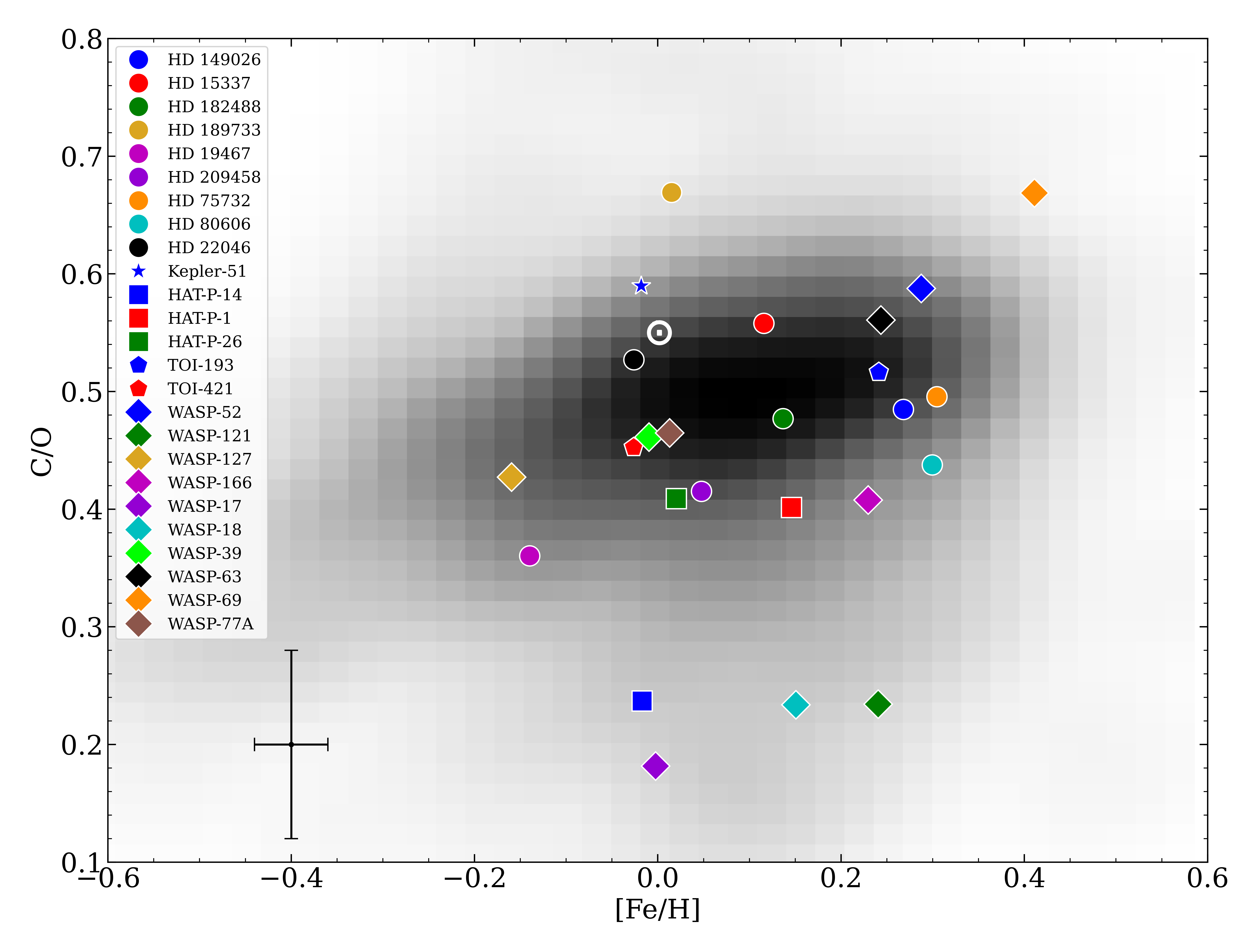


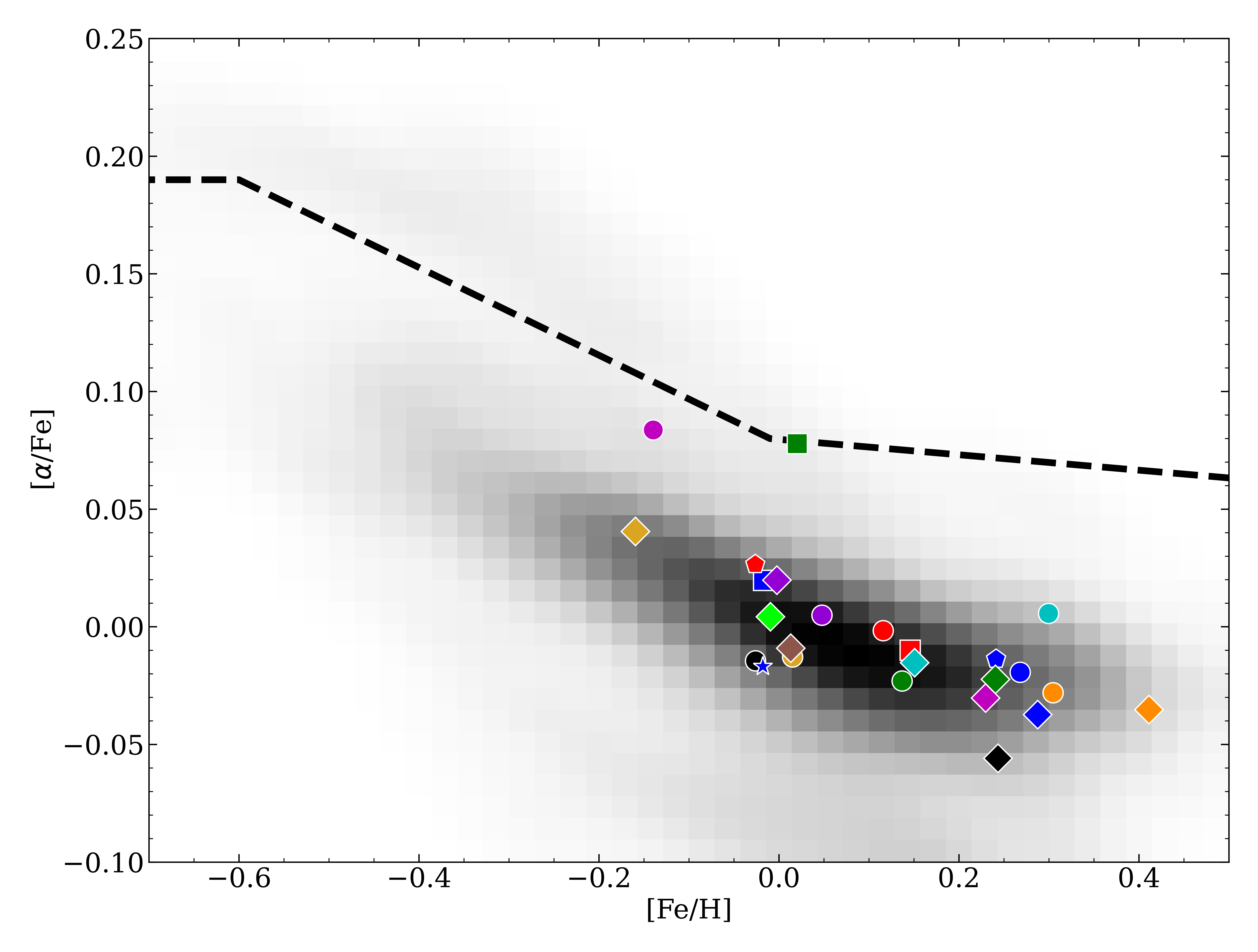
Weighing a Planet

How much does a planet weigh? Or, more precisely, how massive are exoplanets?
The answer to this question is crucial to give us insight on what a planet may be made of but
a planet's mass cannot be measured from a K2 or TESS lightcurve alone.
As a member of the TESS-Keck Survey, I regularly use the High Resolution Spectrometer (HIRES) at Keck Observatory to measure the radial velocity signal of stars from which we derive the mass of a companion planet. As a result, I have contributed to
the detection and characterization of multiple exoplanets.
Wolf 503b
The subject of my first primary-author paper was the mass determination of a sub-Neptune known as Wolf 503b. I collaborated with scientists of 9 nationalities using over one hundred radial velocity measurements from not only Keck/HIRES but also PFS, CARMENES, and HARPS-N.
My work determined this 2 Earth radius planet to have a mass of 6.2 Earth masses opening the possibility of Wolf 503b have a substantial (~50%) water mass fraction or a respectably sized envelope of hydrogen/helium.
Read more about this system and its potential for future follow up here.
Follow-up with Spitzer
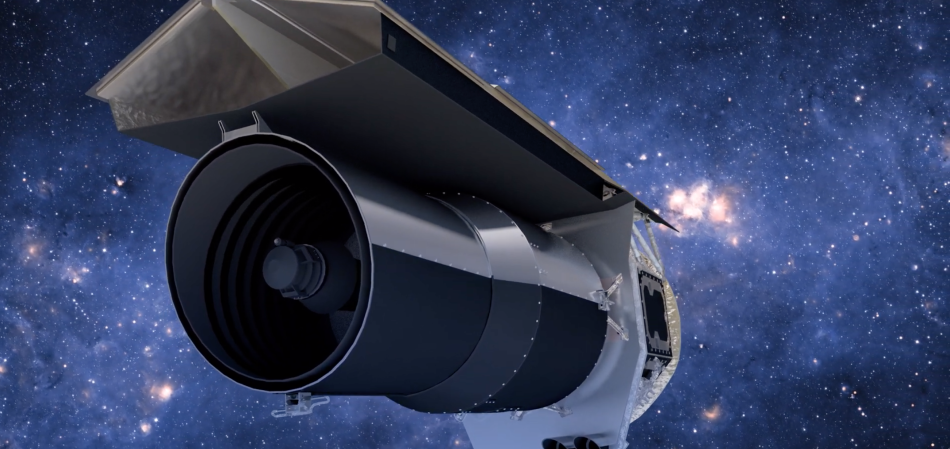
The Spitzer space telescope was never meant to study exoplanets but, with some creative analysis of its sensor at the sub-pixel level, it served as an important tool for exoplanet follow up until its retirement in January 2020. I work with transit data
acquired by the Infared Array Camera (IRAC) typically at a wavelenth of 4.5 microns. Uncertainties in orbital parameters grow linearly with time so your confidence in when a planet will next transit its star decreases as time goes on. Not only is a transit recovery
from Spitzer important in confirming the existence of a planet (beyond a Kepler or TESS detection) but it also
constrains the period of the orbit allowing us to make more accurate predictions of transit events for future investigations.
TESS Object Follow-up
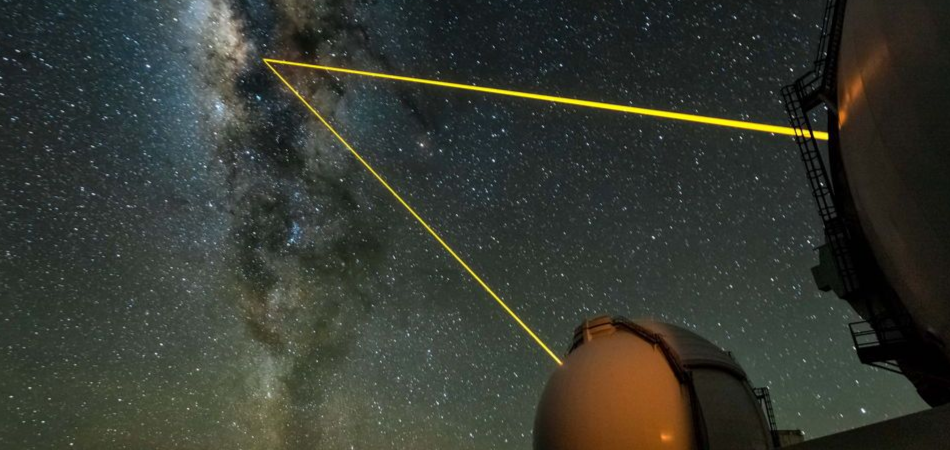
Content coming soon.
Banner image credit: Ethan Tweedie Photography
Science Visualization
While writing my dissertation talk, I proscrastinated by stepping up my matplotlib game and learning how to use the animate function. Since then I've been making various animations to help visualize the methods we use in exoplanet science. These are all in the creative commons, so please feel free to use them however you wish.
Have something you want animated? Let's talk!
Transit Method
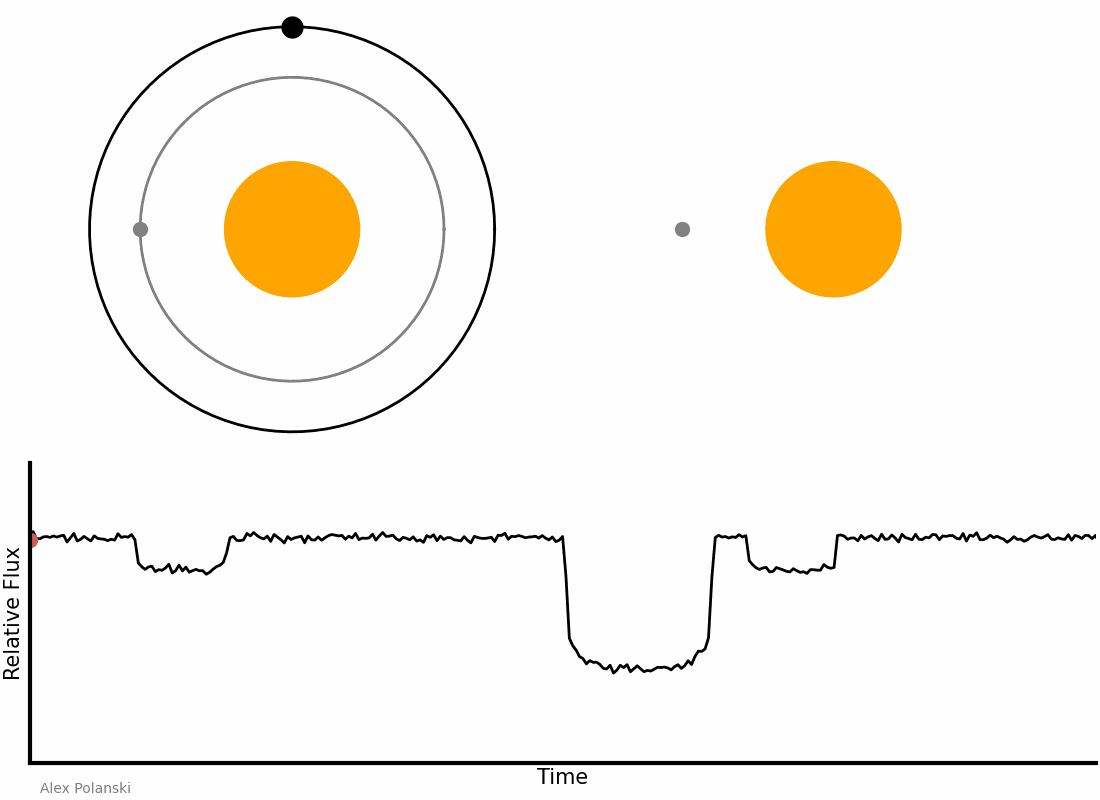
The transit method is the (for now) most successful method of discovering planets. From our vantage point on Earth, we are sometimes lucky enough to be view a planetary system edge-on. In this case, the planets pass in front of their star and we observe a transit.
Radial Velocity Method
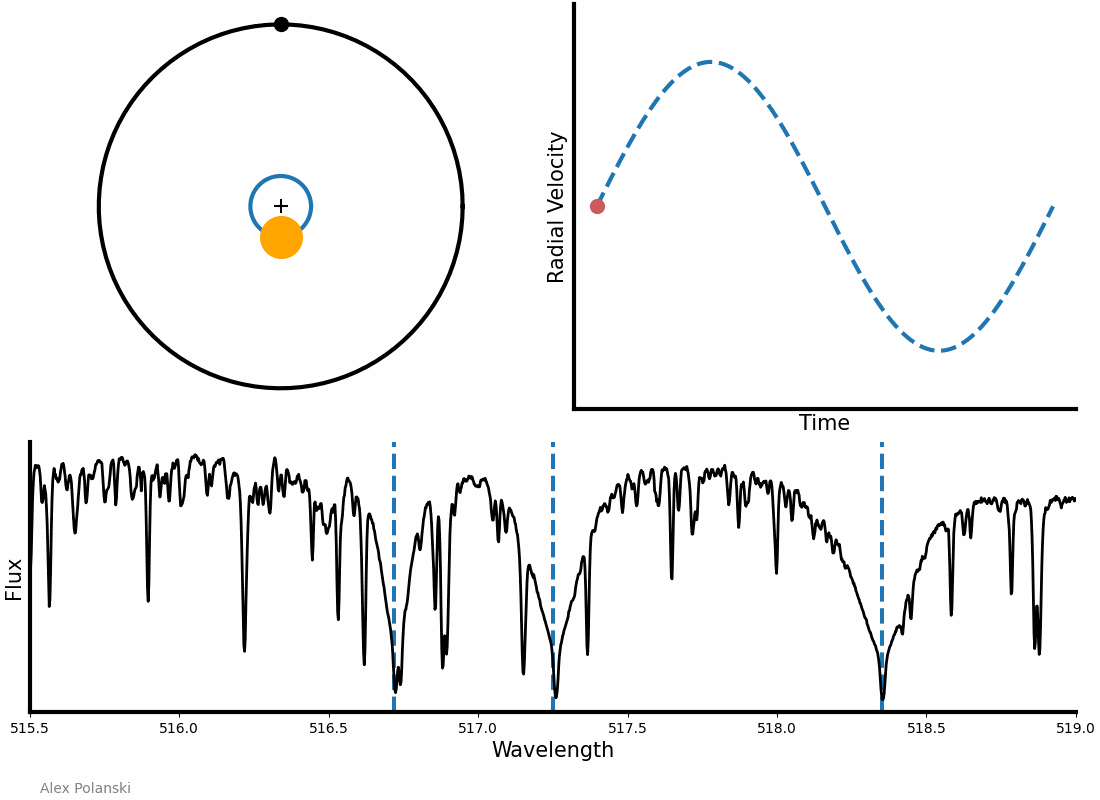
The radial velocity method in one of the original ways of finidng exoplanets. With this method, we split starlight into its constituent colors. As a planet orbits its star, the mutual gravitiational pull will cause the star to orbit around the barycenter. The wobbling of the star causes spectral lines become blueshifted and redshifted. By measuring these shifts, we plot a radial velocity curve.
Binary Dilution

Nearly 50 percent of stars are actually binaries. Some of them are close binaries, so close that we aren't able to resolve them with our cameras (unless you have a special telescope). If we detect a planet around one of these stars, we might derive the incorrect size of the planet if we don't properly take into account the extra flux being added from the other star. This animation shows how drastic that affect can be depending on which star the planet orbits.
Rossiter-McLaughlin Effect

The angle between a star's rotation axis and the angular momentum vector of the orbit (the "obliquity") is an important tracer of a planetary system's history. To measure this quantity, we take advantage of the blueshifted and redshifted portions of the stellar surface. As a planet transits it will block out different portions of the surface which bias the spectral line profiles, resulting in either a net blue or red shift. The shape and amplitude of this velocity anomaly will depend on the obliquity of the planet and the rotational velocity of the star.

I also wrote a package to generate an image of the geometry of a transiting planet to show its obliquity. Check out Rossiter-McPlotlin on Github.
Outreach
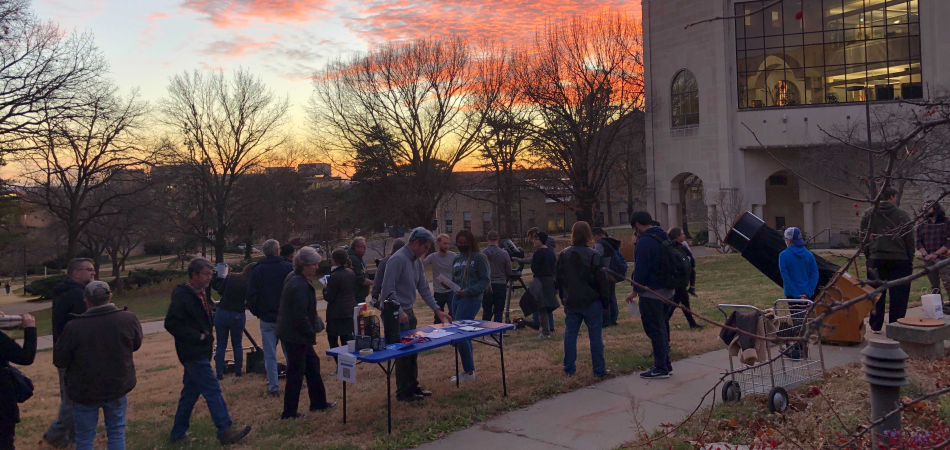
The Links below showcase some of the effort I've made to make astronomy more accessible to public. I believe outreach is one of the most important responsibilites for a scientist - it's up to us to ensure the public understands the work we do.
Astronomy for the Public
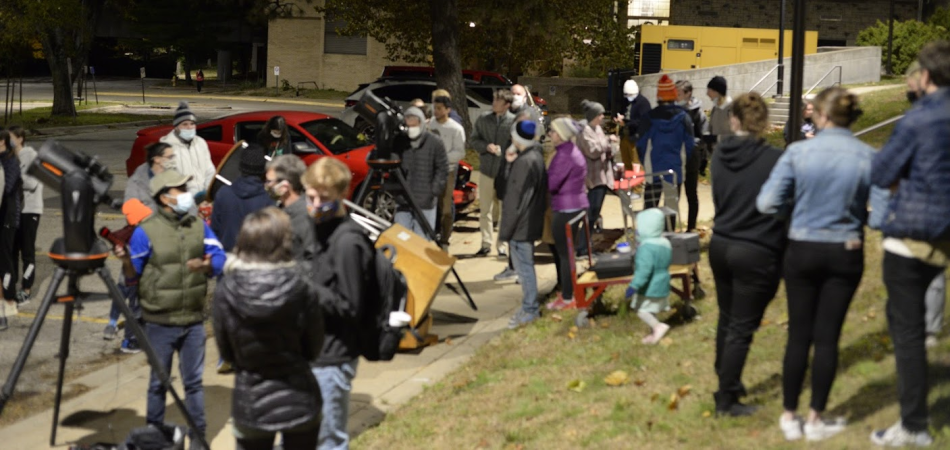
I am one of the founding organizers of Astro Nights at the University of Kansas. Every second Thursday of the month we host a talk from one of our faculty or graduate students followed by a chance for the public to see the cosmos up close with one of the department telescopes. We currently have four 8 inch Cassegrain reflectors but the star of the show is the 14 inch Dobsonian donated to our department (allegedly signed by John Dobson himself).
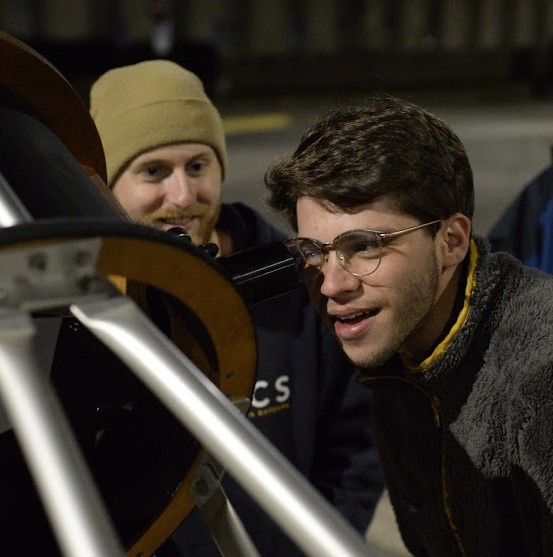
Before Astro Nights, there was no regular outreach effort. The telescopes were scattered throughout the building until I was able to secure a dedicated room for their proper storage. Now since November 2021, we've been able to attract on average 50 visitors for each event and bring the universe just a little closer to the people of Lawrence.
Along with a talk each month, we also plan to use the ExoLab's new inflatable planetarium to host immersive presentations taking the audience from the surface of Mars to far away galaxies. This planetarium packs a large punch in small space. It's large enough to seat 20 people but packs down into large suitcase opening the opportunity to give planetarium shows throughout Kansas.
Space Pop Art
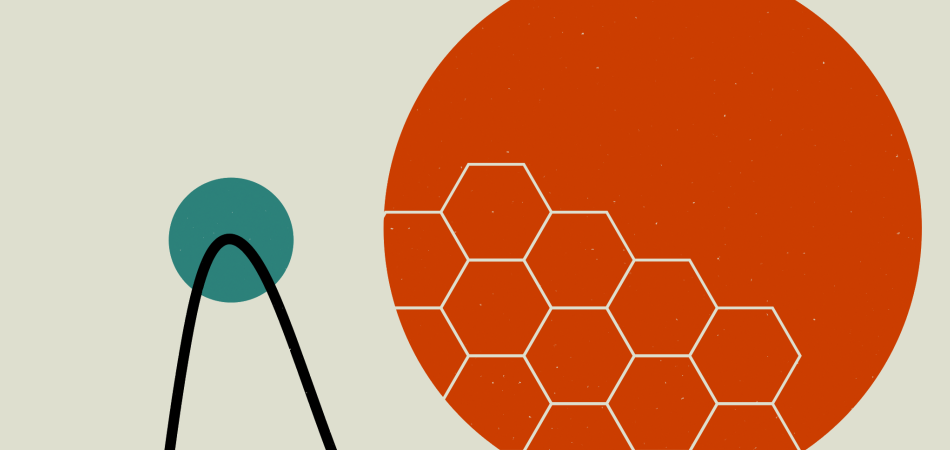
I've started a series a mid-century pop art style posters commemorating some of astronomy's greatest hits. Each one comes with an informational backside explaining the impact each mission/instrument had on astronomy - perfect for your own outreach events!
Here are few of my favorites so far.
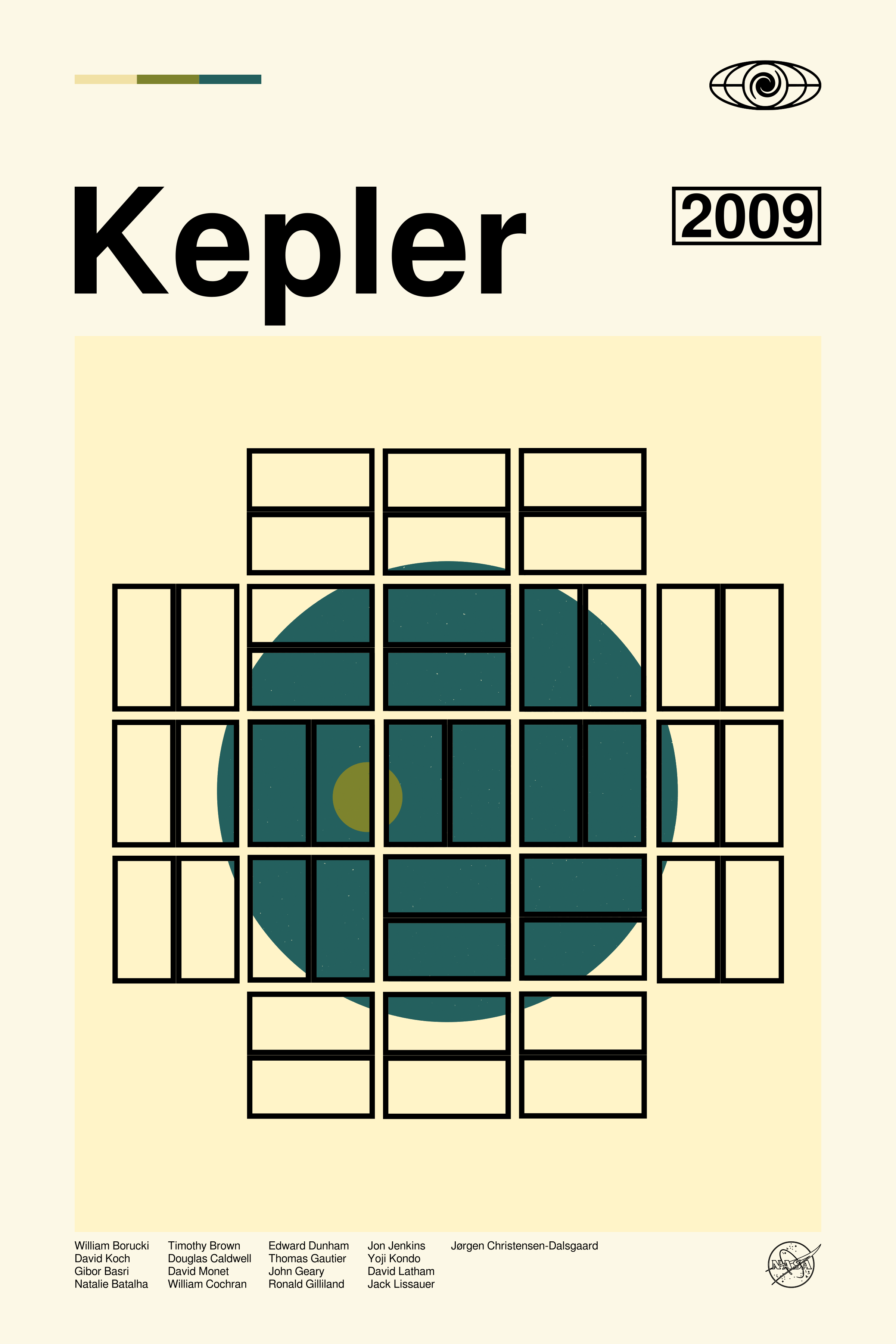
For the Kepler space telescope, this one shows a planet transiting its star with Kepler's charcteristic CCD chip array imprinted ontop.

This poster celebrates Hubble's contribution to probing exoplanet atmopsheres with the Wide Field Camera 3 instrument. Big thank you to Yoni Brande for writing the info blurb for this one.
Check out the rest of them on my Github
Contact
Email: aspolanski at lowell.edu
 At Lowell Observatory, I'm searching for exo-Solar Systems by using the EXPRES instrument on the Lowell Discovery Telescope to
search for small planets in systems with known Jovian analogs. Originally from Los Angeles, CA, my love for astronomy began at El Camino Community
College in Gardena, CA. I transferred to the University of California, Santa Barbara and recieved my Bachelor's degree in physics with a minor in
astronomy. I pursued my Ph.D at the University of Kansas, under the supervision of Dr. Ian Crossfield, where I worked with high resolution spectra
to measure the mass of TESS-discovered planets, and measure precise stellar abundances. I also had a short stint at Caltech-IPAC working with Dr. Aurora Kesseli
to search for variability in the atmosphere of the hot-Jupiter WASP-76b.
At Lowell Observatory, I'm searching for exo-Solar Systems by using the EXPRES instrument on the Lowell Discovery Telescope to
search for small planets in systems with known Jovian analogs. Originally from Los Angeles, CA, my love for astronomy began at El Camino Community
College in Gardena, CA. I transferred to the University of California, Santa Barbara and recieved my Bachelor's degree in physics with a minor in
astronomy. I pursued my Ph.D at the University of Kansas, under the supervision of Dr. Ian Crossfield, where I worked with high resolution spectra
to measure the mass of TESS-discovered planets, and measure precise stellar abundances. I also had a short stint at Caltech-IPAC working with Dr. Aurora Kesseli
to search for variability in the atmosphere of the hot-Jupiter WASP-76b.
 When I'm not studying worlds beyond our Solar System, I spend time exploring the planet we call home. I hike,
rock climb, and photograph anywhere I can (although, the Southwest U.S. is my favorite). I'm also committed to keeping my Duolingo streak going strong.
When I'm not studying worlds beyond our Solar System, I spend time exploring the planet we call home. I hike,
rock climb, and photograph anywhere I can (although, the Southwest U.S. is my favorite). I'm also committed to keeping my Duolingo streak going strong.


















